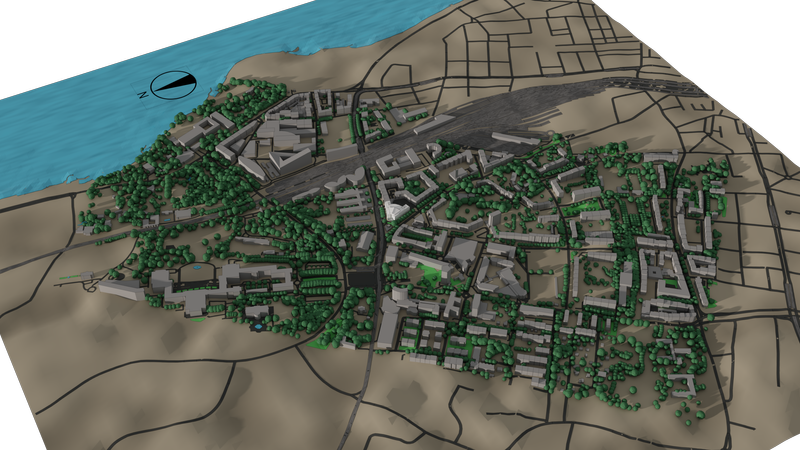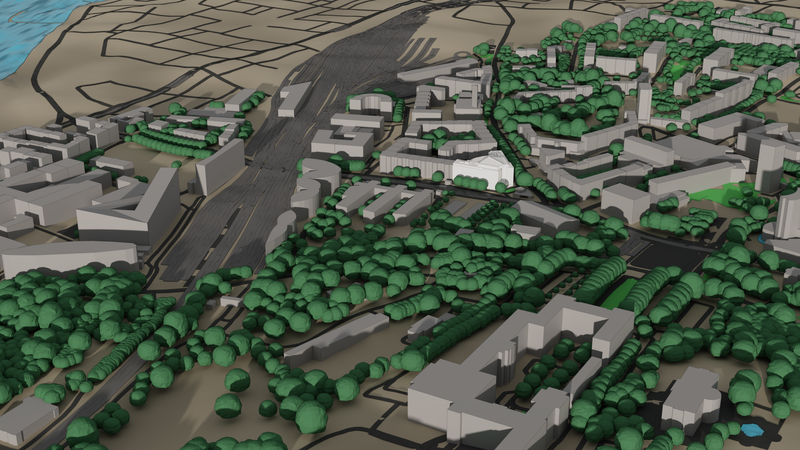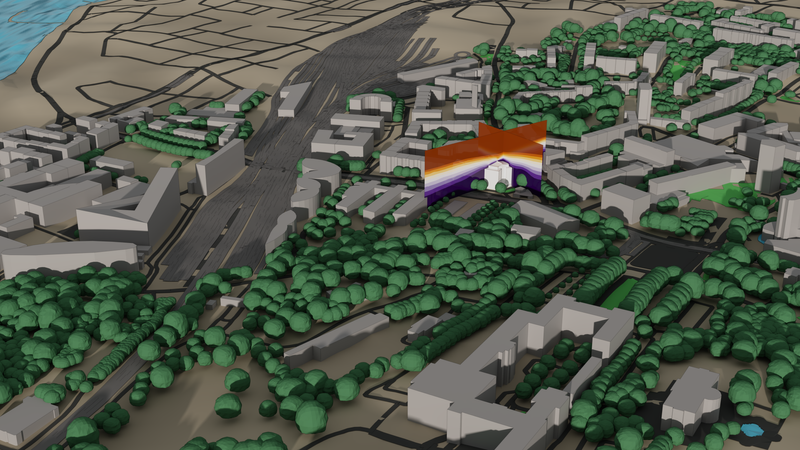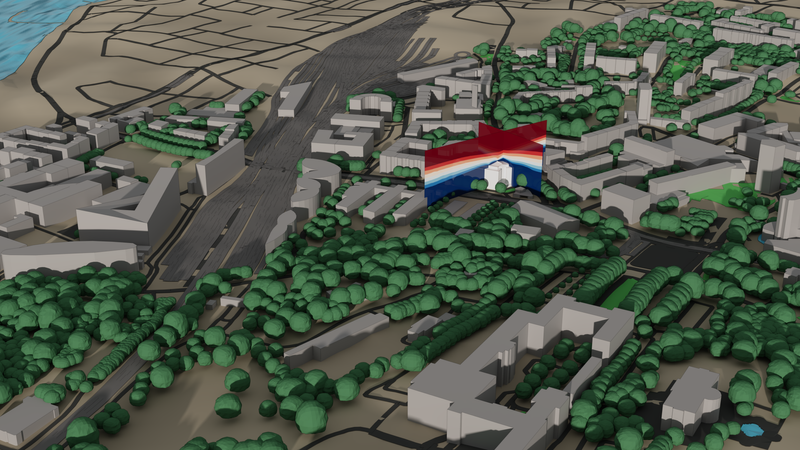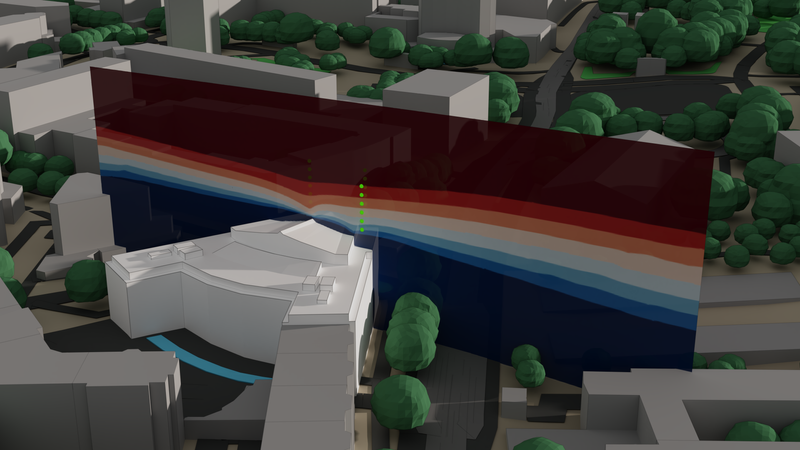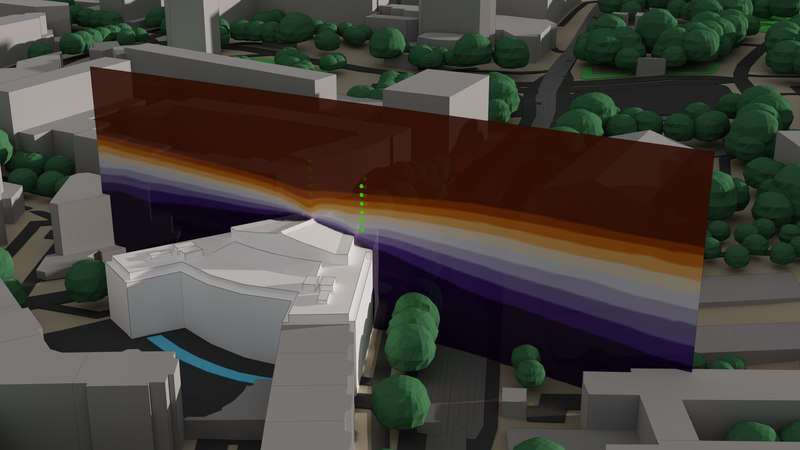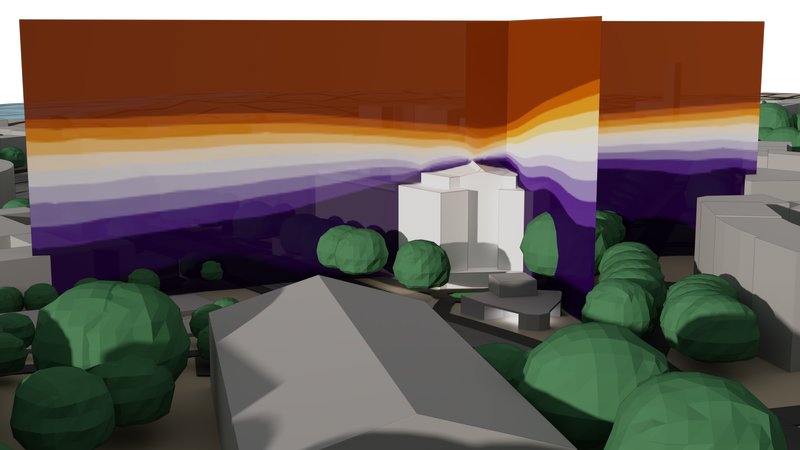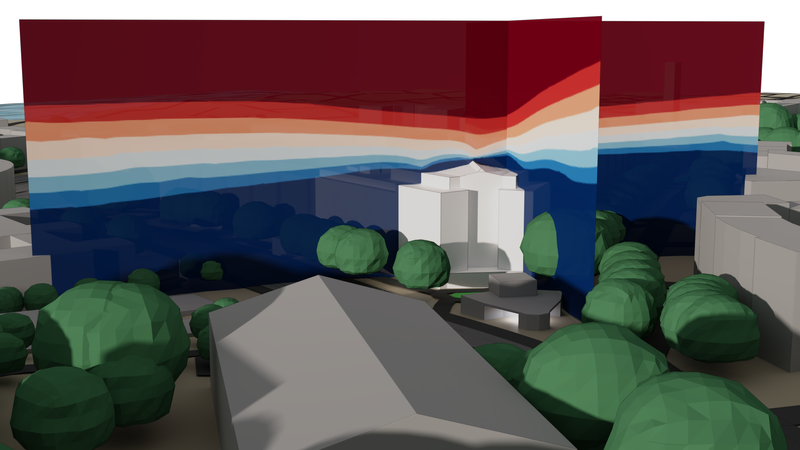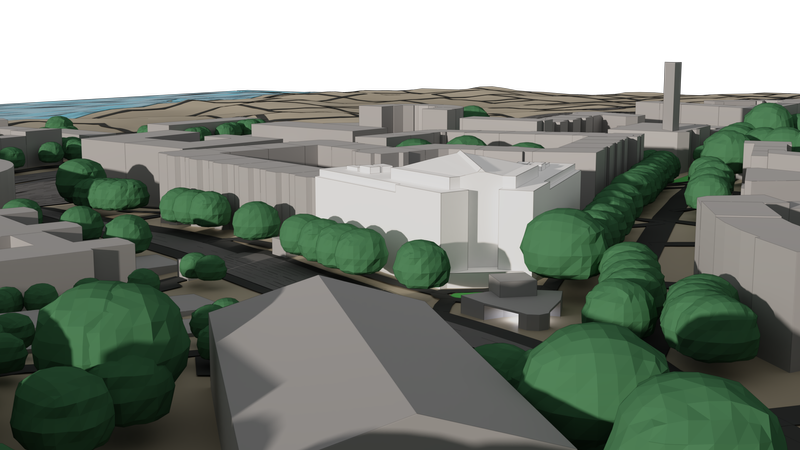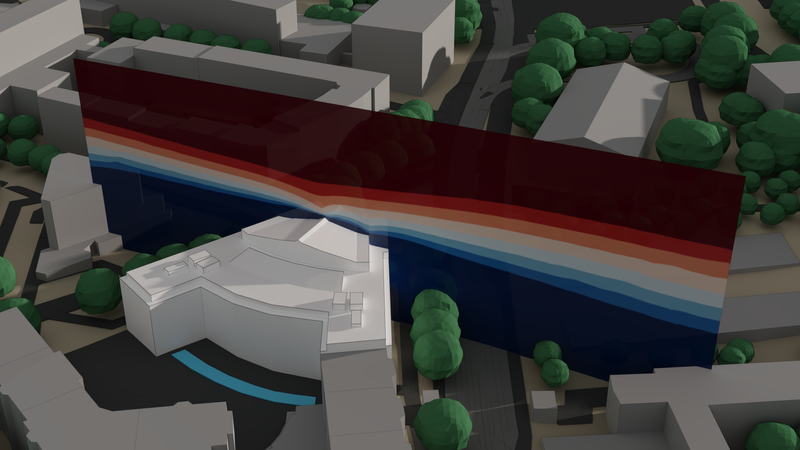Working on Sustainable Development Goals for the UN
The 2030 Agenda for Sustainable Development, adopted by all UN member states, provides a shared blueprint for peace and prosperity for people and the planet, now and into the future. At its heart are the 17 Sustainable Development Goals (SDGs). We are proud that we were invited by the Swiss company Flowgen, experts in small-scale, urban wind power, to participate in a project to assess how 2 of the 17 goals can be tackled in Geneva at the Headquarters of the UN High Commissioner for Refugees.
The goal of the project was to find optimal locations for small-scale urban wind turbines to generate clean, sustainable energy directly on the roof of the UNHCR Headquarters, working towards Goal 7 - Affordable and Clean Energy and Goal 11 - Sustainable Cities and Communities.
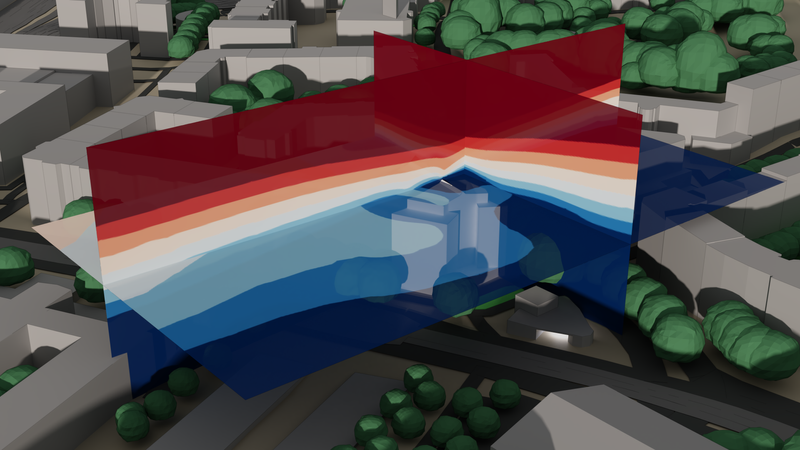
The UNHCR building in Geneva is located right between the airport, port and train station, in an area with a number of moderately high buildings and lots of trees. Leveraging various open data sources, from terrain to buildings, to the tree cadaster of Geneva, we wrote software to import these sources into an aggregated model and generated an integrated 3D model as basis for a simulation. Trees, especially leafy trees in summer, do influence the wind conditions considerably, and have to be included in any urban wind simulation to give an accurate view of the wind flow.
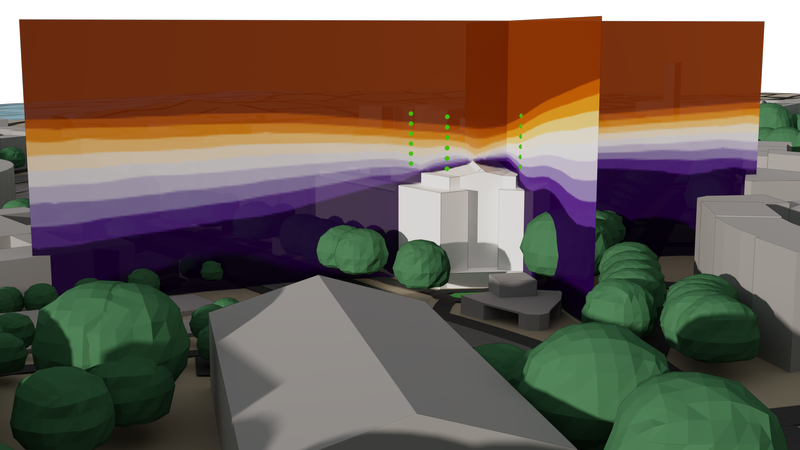
This is even more important for urban wind farming on a smaller scale, since hub heights of turbines are usually severely limited, yet energy yield has a cubic dependency on higher wind velocities which increases with height. To find optimal trade-offs between energy yield, static demands, support structure costs and appearance of the cityscape, robust data are needed.
It is crucial to not only determine the best available ground location, but also the optimal height for any urban wind farming device. This calls for accurate 3D models of the built environment, careful selection of the simulation model and experience in setting correct inflow parameters based on a statistical analysis of historical wind data for the location.
All this results in a high resolution simulation that allows robust prediction of wind yield for the selected wind turbine characteristics. The renders do not only show wind velocity, but have been calculated by us to also represent the expected power output for the turbine characteristics considered in the project.
If you’d like to know more about the urban wind energy potential for your project, just drop us a note!
Published:


